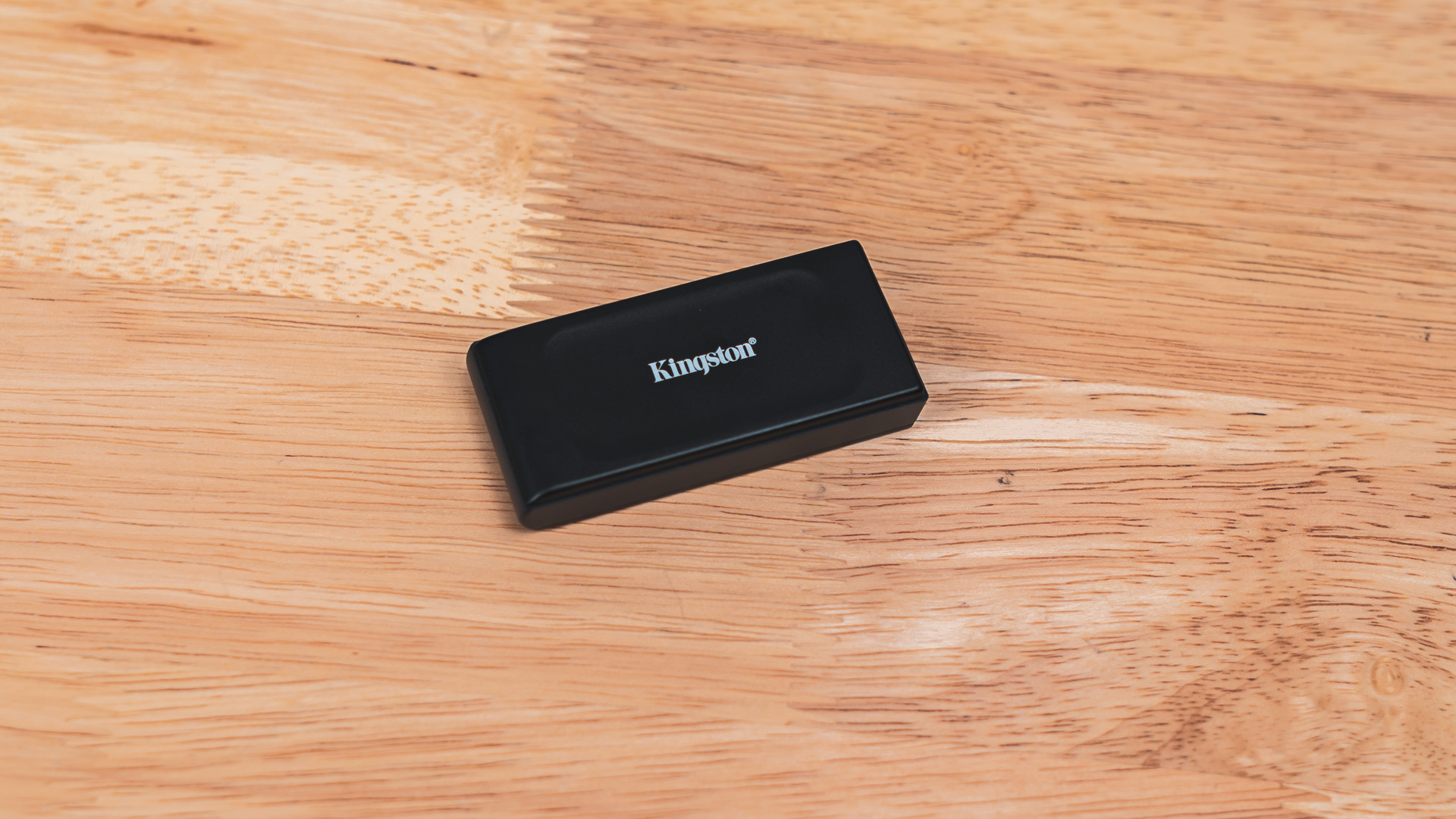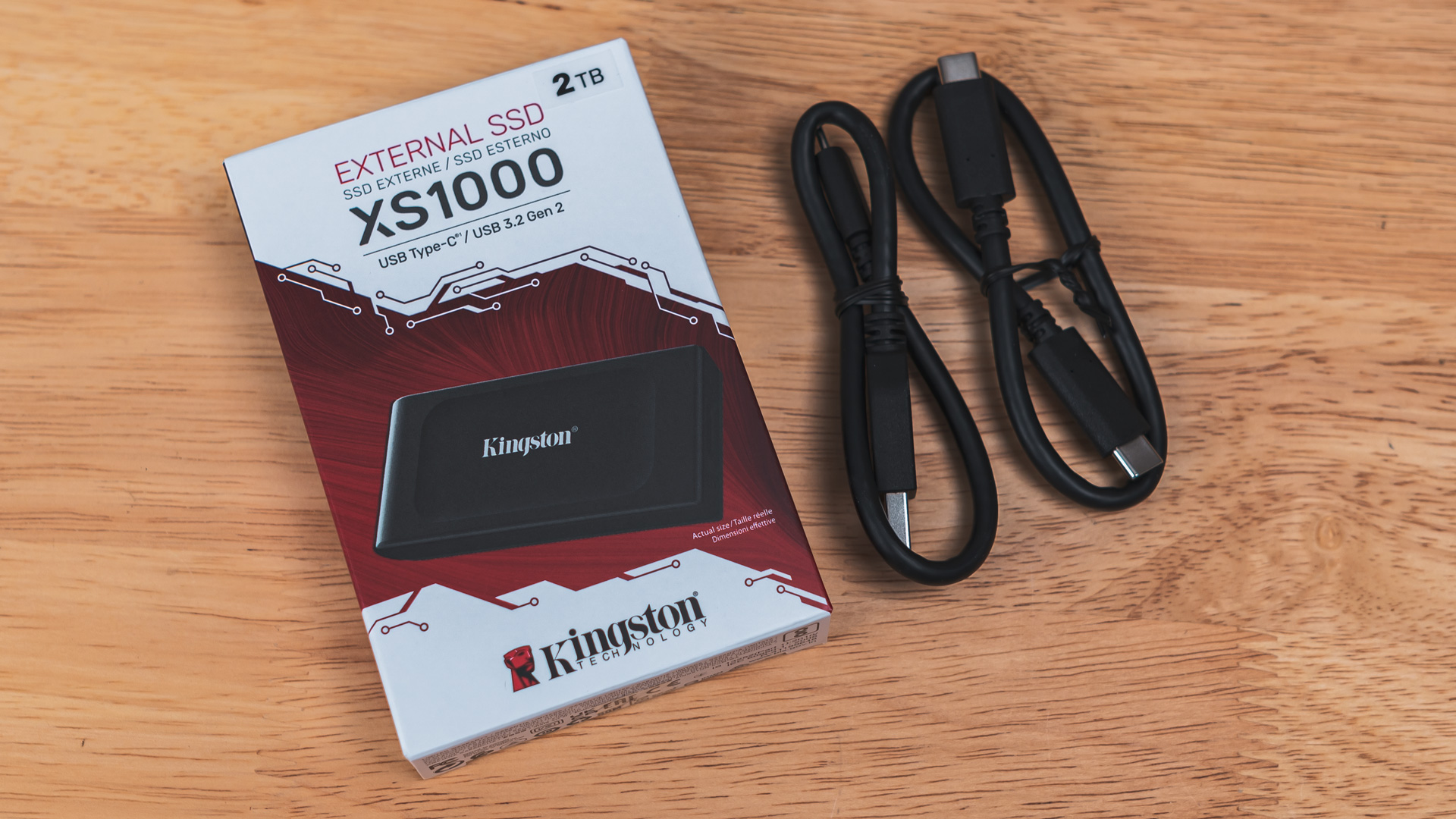The arena of external storage drives is a fast-changing landscape. Entering this arena is Kingston’s newly launched XS1000 external drive. This new external SSD, promises a blend of performance, durability, and sleek design. As we delve into the features and performance of this storage device, let’s see if it lives up to the expectations set by the renowned manufacturer.
Design
The Kingston XS1000 arrives in a compact and lightweight package, maintaining a design that’s familiar to many users. Upon unboxing, you’ll discover the XS1000 SSD itself, measuring 69.5mm x 32.6mm and weighing a mere 28.7g. The package also includes a USB-A to USB-C cable and a USB-C to USB-C cable for versatile connectivity options. The housing is crafted from a blend of plastic and metal components, with a central plastic frame nestled between two metal enclosures. Additionally, the USB C port and the LED status indicator are found on the side profile.
Technical Specifications
| Interface | USB 3.2 Gen 2 |
| Speed1 | Up to 1,050MB/s read, 1,000MB/s write |
| Capacities2 | 1TB, 2TB |
| Dimensions | 69.54 x 32.58 x 13.5mm |
| Weight | 28.7g |
| Casing material | Metal + plastic |
| Operating temperature | 0°C~40°C |
| Storage temperature | -20°C~85°C |
| Warranty/support3 | Limited 5-year warranty with free technical support |
Benchmarks

For those who are interested in technical benchmarks, the above image clearly shows how the drive performs on specific USB protocols. To achieve its advertised rate of speeds, users will have to ensure that they are running the device from a USB 3.2 Gen 2 port. Running the device on any other backdated protocol will cause a massive drop in performance.
[embedyt] https://www.youtube.com/watch?v=Od3eVc0shHI[/embedyt] [embedyt] https://www.youtube.com/watch?v=N6dafY1AuB8[/embedyt]The two videos above actually shows the real world application of data transfer to and from the Kingston XS1000. Files of size 32GB were uploaded onto the Kingston XS1000 and it took only 44 seconds whereas downloading files from the device onto the desktop took a mere 37 seconds. I have to say that I am mightily impressed by such real-world performance.
Conclusion
This external drive from Kingston does indeed live up to its claim of being able to deliver ultra-fast data transfer speeds, provided the right USB protocol is in use. Given how it actually performs in real life, most daily users are sure to be amazed as to how transferring data can be done seamlessly and most importantly with a shorter period of time. Adding on, the sheer size of the device is also another key factor in which most consumers are going to be enticed with. All in all, I have to say that this Kingston XS1000 external SSD is the latest gadget I will be travelling around with and I am sure that I will be getting another two or three more for data storage.






